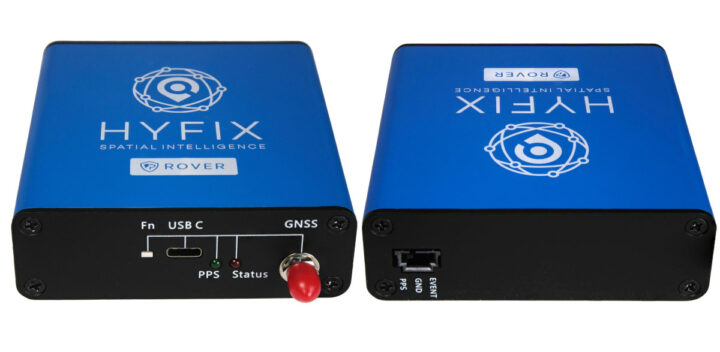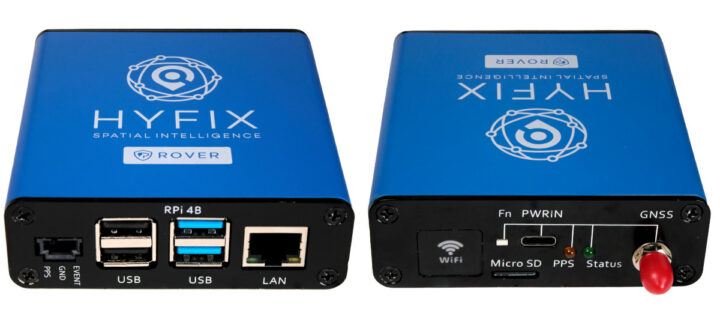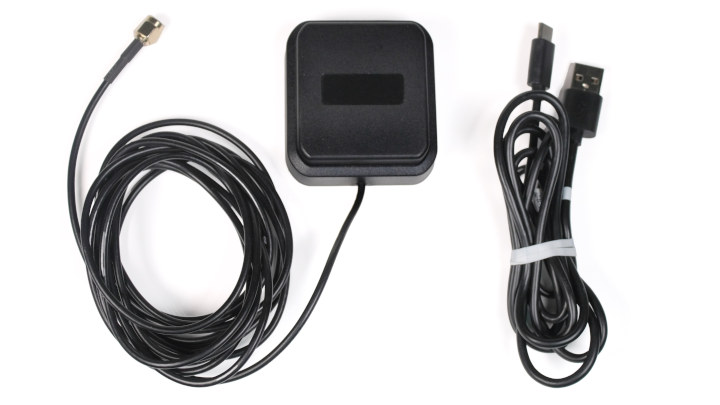HYFIX’s RTK Rover is an affordable, centimeter-accurate RTK (Real-time Kinematic) GNSS receiver with either a USB interface or/and Ethernet connectivity with the latter relying on a Raspberry Pi 4 SBC.
As a reminder, RTK relies on traditional GNSS networks like GPS and works with a Base station at a fixed location and a Rover station that can be fitted to a drone or mobile robot in order to determine the position with up to one-centimeter accuracy. The RTK Rover from HYFIX is equipped with a dual-band LC29H GNSS module from Quectel and an onboard IMU sensor that tracks position through dead reckoning when GNSS connectivity is lost.

RTK Rover specifications:
- MiniPCIe card with Dual-Band L1/L5 RTK Receiver (Quectel LC29H)
- Antenna – External antenna (6x5x2 cm) connected to SMA connector
- Sensor – IMU
- Interfaces
- USB Type-C port for power and serial Interface
- Ethernet Rover Kit only – Gigabit Ethernet and USB ports via Raspberry Pi 4 SBC
- Misc – Fn (Function) button, PPS and Status LEDs, 3-pin connector with PPS, GND, and EVENT
- Power Supply – 5V via USB-C port
- Dimensions – 10 x 9 x 3 cm (metal enclosure)

Both versions have open-source board designs in the sense PDF schematics, mechanical files, and drivers are provided on GitHub, and they work with QGNSS software, RTKLib, and HYFIX open-source tools, but I could not find a link for the latter, so maybe they’ll be added to GitHub soon.
The device comes with a 30-day trial for the GEODNET decentralized GNSS reference network that allows you to get accurate location data without your own base station(s) and can be used for applications such as civil surveying, high-definition mapping, smart agriculture, and robotic solutions. We covered the GEODNET network earlier this year when writing about the ROCK Base triple-frequency RTK/GNSS base station. The GEOD token is associated with the network and the coverage map now shows close to 3,300 miners spread across the world.

HYFIX has launched their RTK Rover on Crowd Supply with a symbolic $1 funding goal. The USB version requires a $195 pledge, while the Ethernet model goes for $395. Shipping adds $8 to the US, and $18 to the rest of the world. Deliveries are scheduled to start at the end of November 2023. A few more details may also be found on the HYFIX website.

Jean-Luc started CNX Software in 2010 as a part-time endeavor, before quitting his job as a software engineering manager, and starting to write daily news, and reviews full time later in 2011.
Support CNX Software! Donate via cryptocurrencies, become a Patron on Patreon, or purchase goods on Amazon or Aliexpress




